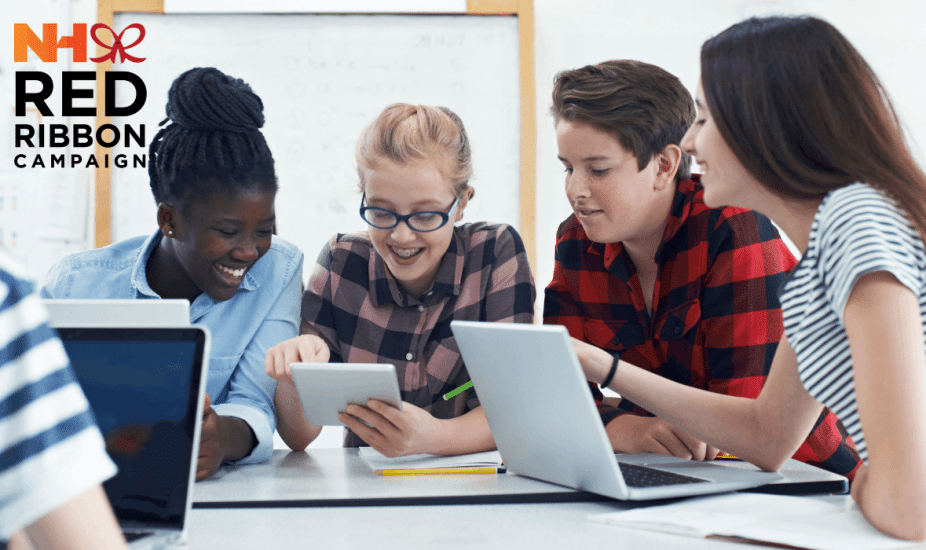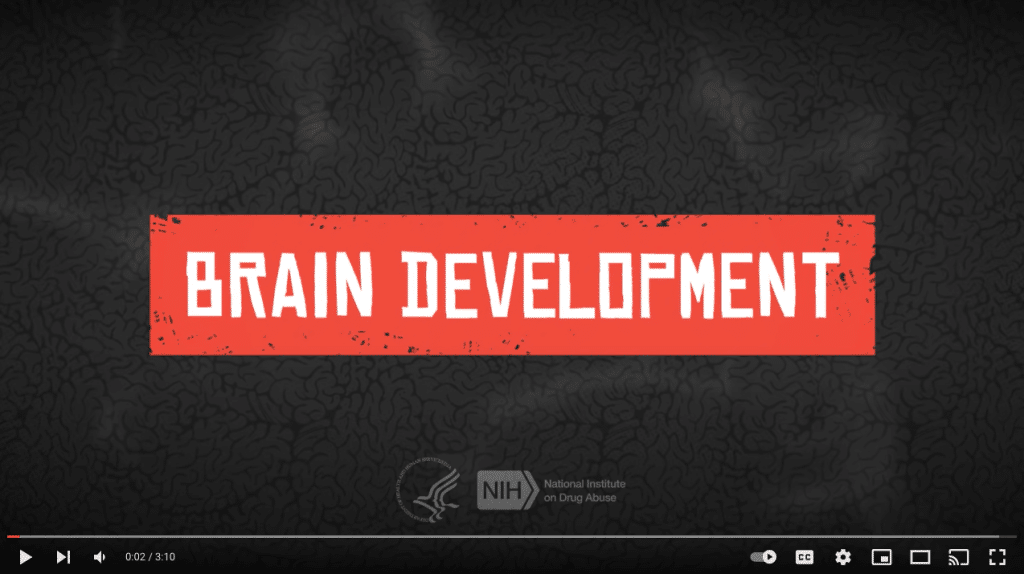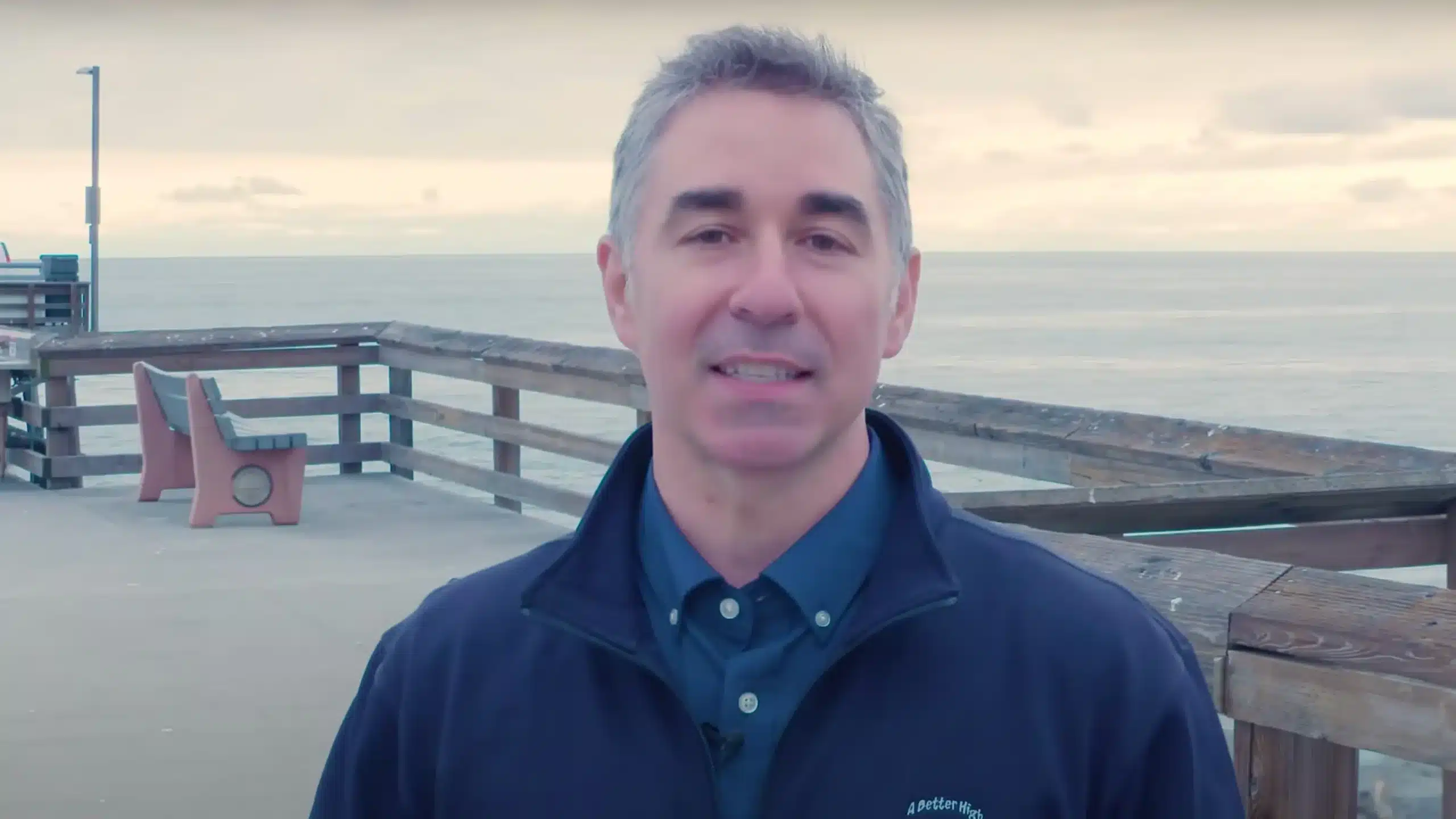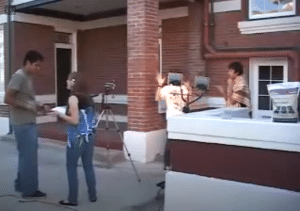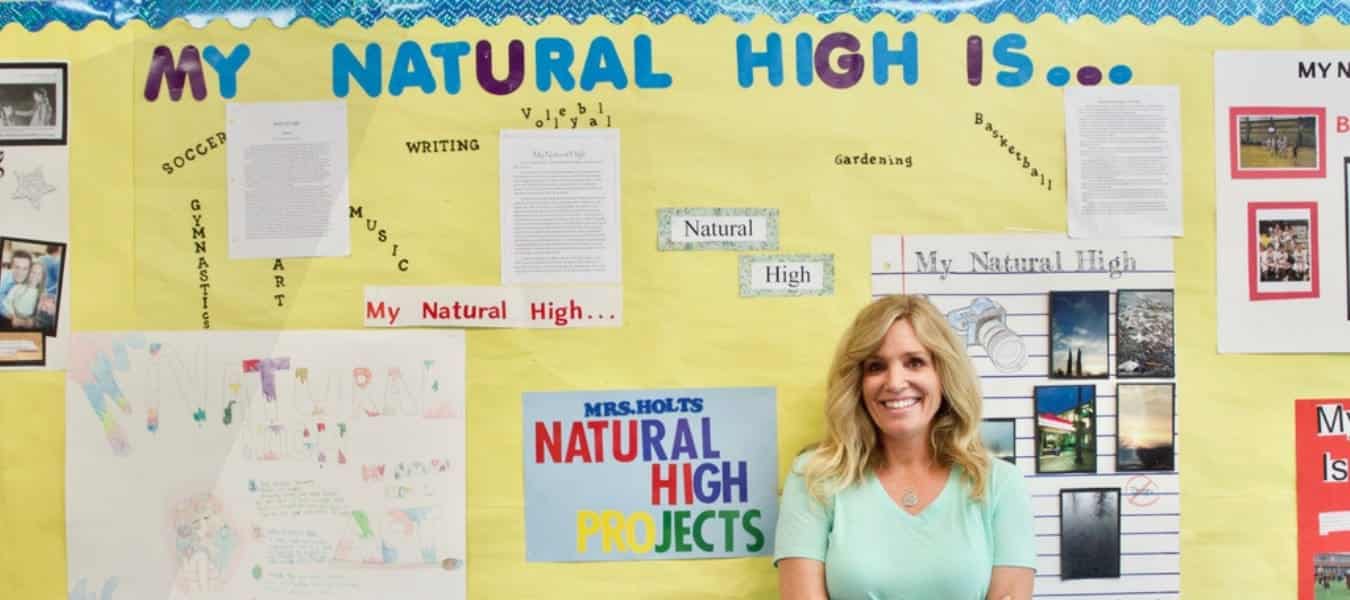 Red Ribbon Week is celebrated each year from October 23 – 31 (read more about what is Red Ribbon Week and its history). In this post, you will find 7 Red Ribbon Week ideas and activities for your students.
Red Ribbon Week is celebrated each year from October 23 – 31 (read more about what is Red Ribbon Week and its history). In this post, you will find 7 Red Ribbon Week ideas and activities for your students.
As educators, we have a vested interest in helping students avoid the pitfalls of drugs and alcohol. The logic of following a path towards a natural high is clear, but logic is rarely the key to keeping kids off the path towards drug and alcohol use.
We know that tweens and teens have the perplexing challenge of trying to fit in and stand out all at the same time. Because of this state of their social existence, peer pressure can be particularly effective at blurring lines and making the clearest logic rather fuzzy.
Kids are also often caught in the middle of pushing boundaries and staying on the straight and narrow path of acceptance. They desperately want to be accepted by their peers, and that need for connection and belonging can easily trump good decision-making.
Red Ribbon Week is a great time to educate your students about the dangers of experimenting with substances. Below we have 7 ideas and activities to help you make the most of this time.
1. Help Your Students Understand Their Development In A Positive Way
It’s important to honor their development in a respectful way and help them to appreciate where they are in life.
For example, it can be ineffective and even hurtful to tell a student, “well your brain isn’t fully developed.”
First of all, unlike height or other markers of development, there is no visual evidence that their brains are changing, and to them, their feelings are reasonable and rational. Thus telling them that their brains aren’t fully functional won’t resonate with them as true.
Secondly, that message can also be heard as “your brain is inferior” or “your brain doesn’t work right” both of which play directly into the insecurities that tweens and teens are facing, making them feel even less connected.
It can be informative and supportive however to teach them about their brain development, “The adolescent brain is fascinating in how it develops and allows you to try new things.”
Researchers have found that the brain is going through a variety of changes through the age of 25.
What’s going on in the adolescent brain is actually really cool. And we can work with teens, instead of against them, to help them understand what’s going on inside their brain. Here is a video from National Institute on Drug Abuse you can show to your students to help explain the teen brain.
And then watch Natural High’s video: The Science Of A Natural High.
In this video, Matt Bellace Ph.D., talks about the science and how finding a natural high can promote healthy choice-making. We think your students are going to like learning about how drugs affect brain development and how teens can use this knowledge to make healthy choices. This Natural High Storyteller video is a perfect content piece to share with your students during Red Ribbon Week.
This far more positive message, lifts the student up, instead of pushing them down.
Consider ways to support students as they grow and learn from a positive perspective, including how they can foster their own brain development by making healthy choices.
It’s also important to know weekends can be challenging times for tweens and teens. They have more freedom to plan their own activities and hang out with friends, and they can often find themselves in situations in which they are being offered or even pressured to experiment with drugs and alcohol.
Even if they are not directly involved in the weekend party scene, tweens and teens are exposed to a more adult world through peers and media. Peer pressure is magnified by social media and general media perpetuates a sexy image of drugs and alcohol.
How kids respond to peer pressure actually leads back to the brain. When their peers are present or can observe their behavior, it kicks the reward center of their brain into overdrive. In fact, inside their brains, the presence of their peers triggers their limbic system to thirst for the pleasant feelings that come from being observed taking risks.
Related: Understanding Teen Peer Pressure
There is real pressure to experiment with risky behaviors and a misrepresentation that “all kids are doing drugs and drinking.” They need independence to explore their world and honest information and effective strategies to help them navigate it safely.
As educators, we can strategize and even role-play with them to help them decide in advance what they will do in specific situations. Natural High has an activity to help kids consider how they will respond to an offer of substances called React In The Moment. This activity is also in Day 5 of our Red Ribbon Week lesson plan.
Combat the misrepresentation of teen drug and alcohol abuse by sharing these 10 teen drug and alcohol use statistics.
2. Share Positive Videos In Your Classroom
Share Natural High’s curriculum in your class, homeroom, or advisory. Each video is 3 to 5 minutes in length, and you can follow up with engaging discussion questions and activities that promote healthy decision-making and resilience.
How Our Program Works
Our youth drug prevention program is based on current scientific findings on youth behavior, brain development, and the power of storytelling.
Click to learn more about our program.
The curriculum utilizes a positive approach, meets students where they are, and includes 40+ well-known athletes, musicians, artists, and celebrities to reinforce the importance of finding your own natural high.
Students will also hear directly about the true dangers of drug and alcohol abuse from these relevant influencers.
Natural High helps to frame decision-making as a positive – just say yes to doing something that fills you with joy and satisfaction – and helps provide students with the tools to create positive and intentional decision-making habits.
Our curriculum walks students through effective strategies and helps them explore alternatives without dictating one path to a healthy lifestyle. Each influencer, we call them Storytellers, video is paired with discussion questions for further reflection and activities for students to be assigned individually or in a group setting. Our curriculum is designed for 4th – 12th grade students.
Related: Celebrities break it down around Red Ribbon Week
Utah Jazz point guard Mike Conley Jr. is just one example of someone kids admire and trust. He turned his focus to basketball in order to rise above peer pressure. He knew that drugs would not help him get to the NBA.
A few of Natural High’s Red Ribbon Week activities include:
- Stressors and Coping Strategies
- Develop a Support Team
- Drug-Free Pledge to Live Naturally High
- Research Your Natural High
- Draw Your Natural High
- Prompt a Family Conversation
- Reacting In The Moment
- And more! We have an entire activity library where you can choose the activity that works best for you!
3. Have Your Students Take The Pledge To Live Drug-Free
Public pledges take many forms, like physically signing a piece of paper or posting a photo to social media. Research shows that signing a pledge, and including friends, a teacher, a parent or guardian, can help keep students accountable for making good decisions.
This has been tested in a variety of contexts and campaigns.The reason public pledges work is simple — they create social pressure.
“Gaining commitments and pledges to perform a behavior has been proven effective, increasing the likelihood that your target will actually follow through with a good intention.” (Social Marketing: Influencing Behaviors for Good By Philip Kotler, Nancy Lee).
Over 80,000 people have directly pledged to live naturally high. Not only does publicly pledging to something increase follow-through, but it has the added benefit of encouraging others to follow suit.
Here are some ideas to have your students take the pledge to be drug-free:
- Have students take the Natural High pledge online
- Students may print and personalize their Pledge not only expressing their commitment to being drug-free but also outlining their reasons why
- Post pledges around your school to show participation
- Download and print the pledge to send home with students
- Distribute the pledge to parents at school events, PTA meetings, or other community
4. Run Your Own Student Video Contest: “Demonstrate Your Natural High”
Every day, youth absorb mixed messages about harmful substances like drugs and alcohol. On one side, they hear about the inherent dangers. But, they also see their role models, heroes, and influencers consume harmful substances without getting to see the shadow side.
We want students to capture a different message — that it’s cool to find and pursue your natural high.
It would be hard to estimate (and impossible to fathom) how much time kids these days spend watching videos on sites like YouTube or TikTok. We want to engage students in ways that are most…well, engaging — to them. So, let’s leverage what’s already working and invite them to create their own videos.
In this activity, we encourage you to challenge students to demonstrate their natural high through video submissions. You might consider running a contest on campus, offering incentives for participation, and sharing these videos with the broader community (the campus, parents, board members and district leaders).
Here is an example of a student submitted Natural High video.
Learn more about how to run the activity here.
5. Get Your Parents Involved – Prompt A Family Conversation
This work can also be shared with your parent community to help them be more informed and involved in supporting their kids, and it will provide them with a positive approach to discussing these difficult topics.
Did you know, teens who consistently are up to 50% less likely to use drugs than those who don’t.
If parents can reinforce at home these messages that the Natural High curriculum can provide students at school, then the students will feel even more supported in making healthy decisions. One of Natural High’s activities is to Prompt A Family Conversation. You may find this activity, and many more, in the Natural High Activity Library. Send this activity home with your students to get a conversation started.
The stronger the support system a student has, the more likely they are to reach out when they are struggling to make a healthy choice.
Send a letter to your parent community for Red Ribbon Week
Many parents are unaware of Red Ribbon Week, so we created a letter you can send home. It provides information about Red Ribbon Week and gives parents information about what their kids are learning. You can also adapt the letter to meet your needs.
6. Take The Red Ribbon Week Photo Challenge
Here’s a great Red Ribbon Week idea to spread awareness amongst your school. Have all the students wear red and take a photo of the entire school or class. You can create different messages and designs. These are great photos for your yearbook and they promote making good choices!
Download the Red Ribbon Week School Photo Challenge here: RRW School Photo Challenge
7. Create a Wall Of Natural Highs
Have students write about their natural highs or draw their natural highs and place them on your classroom wall. This Red Ribbon Week activity helps students to identify their natural high, if they don’t already have one. Research has shown one of the single most effective protective factors for helping youth thrive and lowering addiction risk is to inspire them to identify and pursue their Natural High.
First begin this exercise with a Natural High activity called “Research Your Natural High.” This activity is designed to get students thinking about what they already enjoy or would like to try.
Start changing lives this Red Ribbon Week.
Click HERE to access our Free Award-Winning Red Ribbon Week content and curriculum.
Has this post inspired your Red Ribbon Week plans? Share with us on Facebook @livenaturallyhigh and tell us some of your Red Ribbon Week ideas and best practices.
We hope these ideas were useful for you and that you had a successful Red Ribbon Week. As a reminder, our program can be used year round. To learn more about Natural High, please visit our About Us page.

